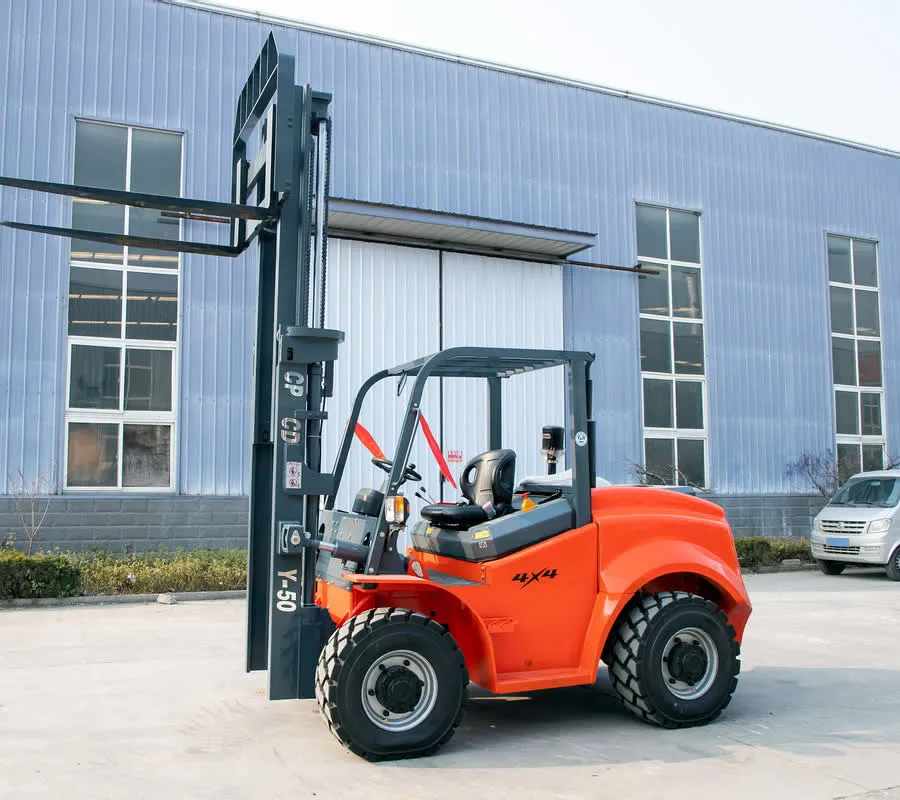
In modern warehousing and logistics environments, forklifts are crucial tools for efficient material handling. However, operating a forklift requires both speed and efficiency, while also maintaining a constant focus on safety. This guide provides a comprehensive guide to efficient forklift operation and essential skills.
Before operating a forklift, formal training and certification are required. Forklift operators must complete comprehensive training covering theory (rules and hazard identification), on-site demonstrations, and practical operations, and undergo an assessment every three years.
Wear appropriate protective equipment, including a hard hat, safety shoes, and a high-visibility vest. Avoid loose clothing to prevent entrapment and accidents.
Daily inspections are essential. Before any operation, always check the tires, oil, hydraulic system, brakes and horn, and fork condition. Report any damage or malfunction immediately and do not operate.
Be careful on mountain roads and slopes: drive forward when going uphill, and reverse carefully and slowly when going downhill to ensure stability and maximum braking control.
Check tire pressure (0.7-0.8 MPa for internal combustion forklifts / 3.5-4.0 Bar for electric forklifts), tread wear, and any embedded foreign objects.
Confirm the hydraulic system oil level is at the center of the dipstick and there are no leaks (static 10-minute test).
Check the chain tension of key mast components for ≤5 mm of play and fork horizontal deviation <3°.
Test the lifting speed during a no-load trial run (standard ≥0.3 m/s) and the braking distance at maximum lift height (≤0.5 m).
Steering wheel sensitivity: Free angle ≤15°, full steering cycle ≤4 seconds.
"Slow is Fast": Many experienced operators on Reddit advise: "Never rush maneuvers; haste can lead to mistakes."
Maintain a clear field of vision: Keep the forks close to the ground as much as possible to enhance visibility. If the load obstructs your view, reverse or seek assistance.
Control speed and cornering rhythm appropriately: Slow down around turns, ramps, and blind corners, and use the horn to warn.
Avoid sudden lane changes or sudden braking: Slowly starting, stopping, and turning can significantly reduce the risk of overturning.
Golden load ratio: The rated maximum load can be carried when the center of gravity of the load is ≤500mm from the vertical plane of the forks.
Slope operation: Forward travel uphill (slope ≤10°), reverse travel downhill (assisted braking required for slopes ≥5°).
|
Scenario |
Gear configuration |
Speed control |
|
Straight channel |
Forward gear + high gear |
≤12km/h |
|
Narrow alley operations |
Forward gear + low gear |
≤5km/h |
|
Heavy load handling |
Reverse gear + low gear |
≤3km/h |
Careful load balance: Ensure the forks are fully inserted into the bottom of the pallet and distribute the load evenly to avoid overloading or one-sided load.
Control fork height: Keep the forks as close to the ground as possible when operating; avoid operating from a high position when turning or loading.
Load Stabilization and Handling of Special Objects: Loads with irregular length, width, and height should be moved slowly and carefully, and secured with straps if necessary.
Route Planning and Environmental Assessment: Before operation, conduct a site inspection to identify obstacles, pedestrian paths, and areas with height differences to prevent rollovers and collisions.
Signage and Ground Safety Management: Use ground markings to demarcate driving and pedestrian zones, and place warning signs at blind corners and intersections to effectively isolate hazardous areas.
Pedestrian Safety Awareness: Operators should yield and sound the horn to prevent pedestrians from approaching the work area, reducing the risk of accidents.
Standardized Parking Procedures: When completing an operation, lower the forks to the ground, release the parking brake, turn off the engine, and remove the key; park in a designated area to prevent unauthorized use.
Follow Battery Manufacturer's Guidelines: Installation, charging, and storage must comply with the battery supplier's recommendations and avoid extreme temperatures.
Power-Off Safety: Always turn off the charger before disconnecting the power cord to prevent arcing, and regularly inspect connectors for wear.
Horizontal Safety Zone: When the forks are raised, maintain an obstacle-free zone with a radius of 1.2m.
Vertical Sightline Rule: Stacks exceeding 1.8m must be operated in reverse.
Complex Motion Programming
Excellent operators can simultaneously perform:
Fine-tuning the forks on the move (±2cm accuracy);
Perfectly complete right-angle turns (aisle width = vehicle length x 1.3).
Digital Assistance Applications
Install an on-board weighing system (±1% accuracy);
Use RFID path planning technology (30% efficiency improvement).
Technological innovation drives safety improvements: While forklifts remain the mainstream material handling tool, manufacturers such as Mercedes-Benz and Tesla have introduced autonomous vehicle-based transport systems to enhance workplace safety and quietness.
Introduction of Intelligent Safety Protection Equipment: Brands such as Hyster offer visual warning lights, collision sensors, and seatbelt status warnings to enhance operator safety.
If you have any questions about forklifts, please contact us for more information.